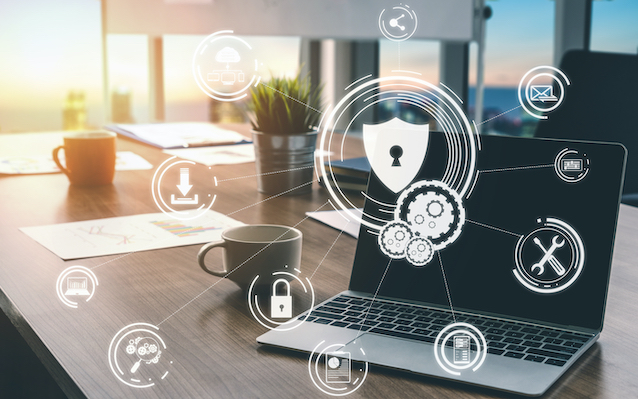
The Coronavirus (COVID-19) has taken the world by storm. It’s quickly changing life as we know it, and many business owners wonder what further impacts may be coming.
Here in Ontario, all publicly funded schools are closing for two weeks following their March break, and many Canadian businesses either have already or are considering having employees work remotely to help reduce the chance of the outbreak spreading. For example, Shopify has already directed their 4,000 Canadian employees to work from home.
While cloud solutions are a big plus for many companies that may have been using them for years and make it much easier for them to send employees home to work, what about security?
A big consideration when you have staff accessing business applications and data from multiple remote locations is how to ensure those connections are secure, and you don’t end up with work product that’s not accessible companywide.
70% of IT professionals believe that remote staff poses a bigger security risk than onsite staff.
It’s no surprise that surveyed security professionals would say that remote workers are more of a risk than those that work in your office. But, if you put the proper safeguards in place, you can ensure that your employees are accessing their work securely, no matter where they are.
There are a number of ways that you can prepare now to ensure your security is where it needs to be should your office decide to have employees work from home during this pandemic (or anytime afterwards).
There’s no reason you need to sacrifice security for flexibility if you follow these six best practices for remote workers.
If employees are working from home computers, you could be at risk of losing files if they have a hard drive crash or ransomware infection. You may also not be able to access a document that’s needed by someone else in the company.
Using cloud storage solves these issues and also ensures that your files are being stored securely.
Have all employees save documents to your company cloud storage account, which ensures all work product is accounted for and you can digitally apply any secure document handling policies that you need to.
It’s not possible for you to control every network that employees may be connecting from when they’re working remotely, but you can secure and encrypt their connections.
A virtual private network (VPN), acts as an encrypted tunnel for all internet traffic, no matter what protection may be on the individual Wi-Fi being used. This ensures sensitive company data won’t be inadvertently intercepted when remote workers are logged into your business applications.
Endpoint security applications, like Microsoft Intune, can be used on both computers and mobile devices to apply several security protocols and keep a handle on who is accessing your data and from which device.
If you’re an Office 365 user, you can get Intune by upgrading to Microsoft 365. Here are some of the ways that it can secure a remote workforce:
If you are planning to have employees use company-owned computers or laptops when they work remotely, have encryption applied to the hard drive for additional protection of any data the device contains.
Users need a specific key or passcode to unlock the device and decrypt the data, which prevents unauthorized users from accessing your company information.
One important safeguard that should actually be in place all the time, but especially when you have users from different remote locations logging into your business network, is multi-factor authentication (MFA).
MFA adds a vital security layer that stops hackers with stolen employee login credentials from compromising your accounts. Adding an additional step of a code that had to be entered to complete login can stop 99.9% of account hacks, according to Microsoft.
Set your employees up for success by letting them know the security expectations when they’re working remotely. With the environment changed, you can’t just expect them to naturally follow what they do at the office.
Provide them with instructions on things like:
Just having employees work from home without preparing can lead to major problems. Haxxess can work with you to put the proper IT systems and security mechanisms in place for a smooth transition to a remote workforce.
Contact us today to schedule a free consultation! Call 705-222-8324 or reach out online.